Plantar Fasciitis Treatments
Plantar fasciitis is the inflammation of the plantar fascia, a thick band of tissue that runs across the bottom of your foot, connecting your heel bone to your toes.
When the plantar fascia becomes inflamed, it causes pain, particularly in the heel area.
Symptoms of Plantar Fasciitis
The main symptom of plantar fasciitis is a sharp pain in the bottom of the heel, which is often most intense when taking the first steps in the morning or after periods of inactivity. This pain can lessen with movement but may come back after physical activity periods.
Causes of Plantar Fasciitis
High-impact activities, prolonged standing, improper footwear, tight calf muscles, excess weight, and foot mechanics (like high arches or flat feet).
DR. STAND STRONG RECOMMENDATIONS
Steps to Finding Plantar Fasciitis Relief:
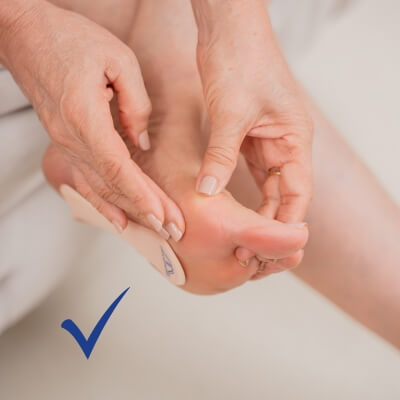
1. Wear daily STAND STRONG® arch supports!
Wear cushioned heel pads like our STAND STRONG® arch supports, designed to provide all-day comfort and protection on hard surfaces.
Our technology supports the three arches of your foot and helps redistribute pressure, promoting a more balanced and comfortable step.
It's also important to give your feet some rest. You can stay active while supporting your feet by modifying activities that may cause discomfort.
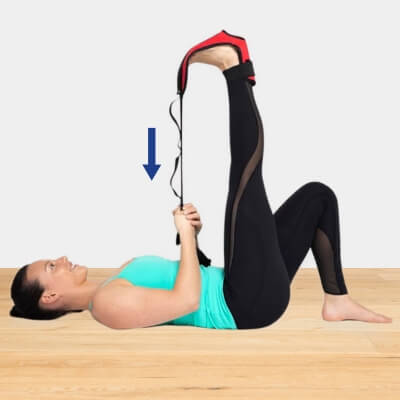
2. Use a Plantar Fasciitis Foot Stretcher
Incorporate stretching exercises into your routine to keep your calf muscles and Achilles tendon flexible.
1. Sit or lay with the involved leg straight out in front of you.
2. Place the band around your foot and gently pull toward you, feeling a stretch in your calf muscle.
3. Hold 45 seconds, 2-3 times.
4. Repeat 4-6 times per day.
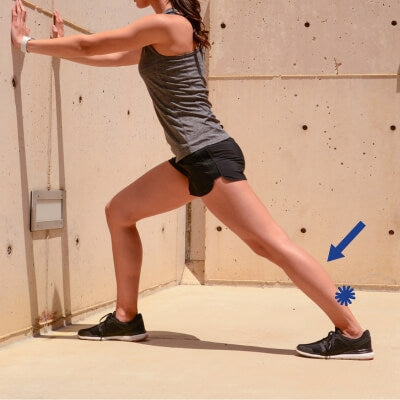
3. Do Calf Stretches!
1. Upright facing a wall at arm's length, and hold your hands on the wall.
2. Keep both feet flat on the floor, extend one leg straight backward, and bend your front leg until you feel a stretch in the calf of your back leg.
3. Hold for 30 seconds and repeat five times for both feet.
4. Do this daily.
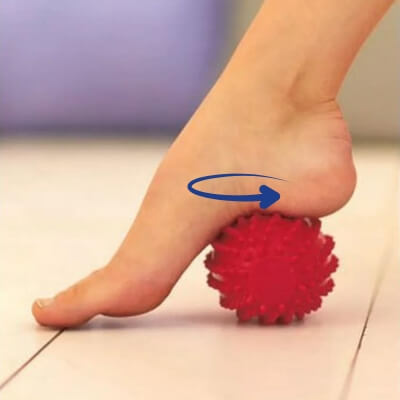
4. Use a Massage Ball for Plantar Fasciitis
This exercise relieves the tension in the ligaments and muscles on the bottom of your feet and stimulates blood flow.
1. Sit on a chair and place the massage ball before you.
2. Gently roll the ball underneath the plantar fascia of your foot.
3. Apply gentle pressure and roll the ball around circularly for 10-15 seconds.
4. Repeat five times per foot.
5. Relieve The Plantar Fasciitis Pain and Plantar Fascia Stiffness
We recommend the supplement Curcumin Phytosome by Thorne which is an alternative that can help with plantar fascia stiffness and soreness, and most importantly, it can promote flexibility of the plantar fascia. Take 1 capsule twice a day and you should start feeling better in about a week!
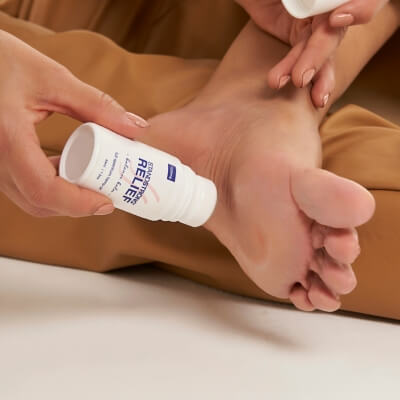
Featured Product
Use the Relief Balance Balm roller ball to massage your feet every night. The botanical and herbal ingredients are known to help with inflammation in many cases. Many customers have found it effective in reducing swelling and pain.
Medical Disclaimer
Our product is not intended to diagnose, treat, cure, or prevent any disease. The Stand Strong® Arch is designed to minimize stress on the foot thereby maximizing stability and comfort. We make no claims or guarantees of payment or reimbursement by insurance companies.
Medical Disclaimer
Our product is not intended to diagnose, treat, cure, or prevent any disease. The Stand Strong® Arch is designed to minimize stress on the foot thereby maximizing stability and comfort. We make no claims or guarantees of payment or reimbursement by insurance companies.
Diabetics and Those with Neuropathy
Please contact your physician or other qualified healthcare practitioner before using this product. If you have decreased sensation or other skin/nerve damage, please consult with your healthcare practitioner before adhering this elastomer material to your foot.
Medical Disclaimer
Our product is not intended to diagnose, treat, cure, or prevent any disease. The Stand Strong® Arch is designed to minimize stress on the foot thereby maximizing stability and comfort. We make no claims or guarantees of payment or reimbursement by insurance companies.
Diabetics and Those with Neuropathy
Please contact your physician or other qualified healthcare practitioner before using this product. If you have decreased sensation or other skin/nerve damage, please consult with your healthcare practitioner before adhering this elastomer material to your foot.







